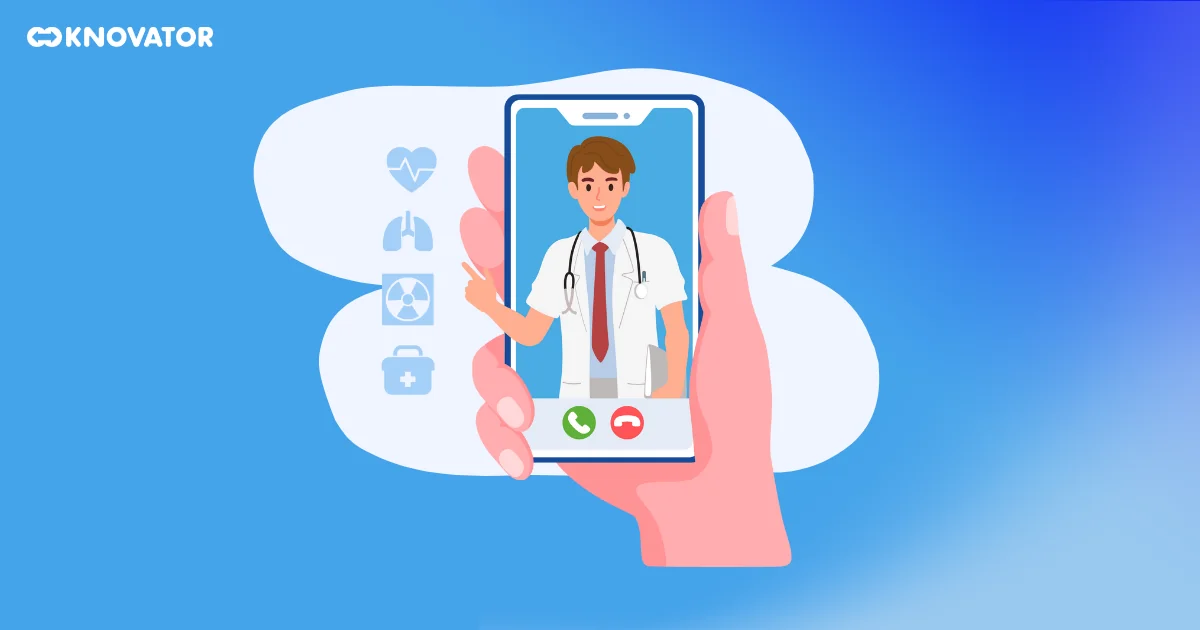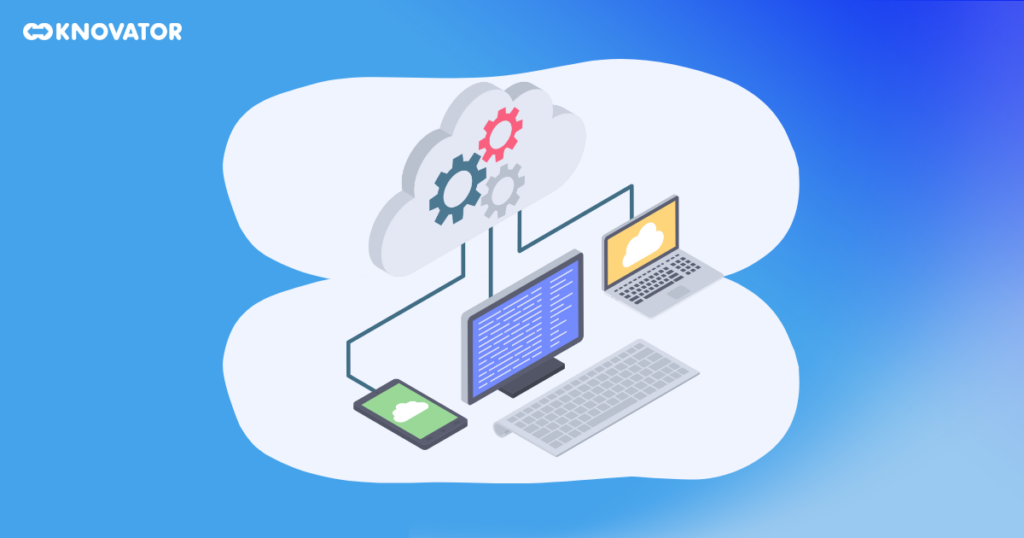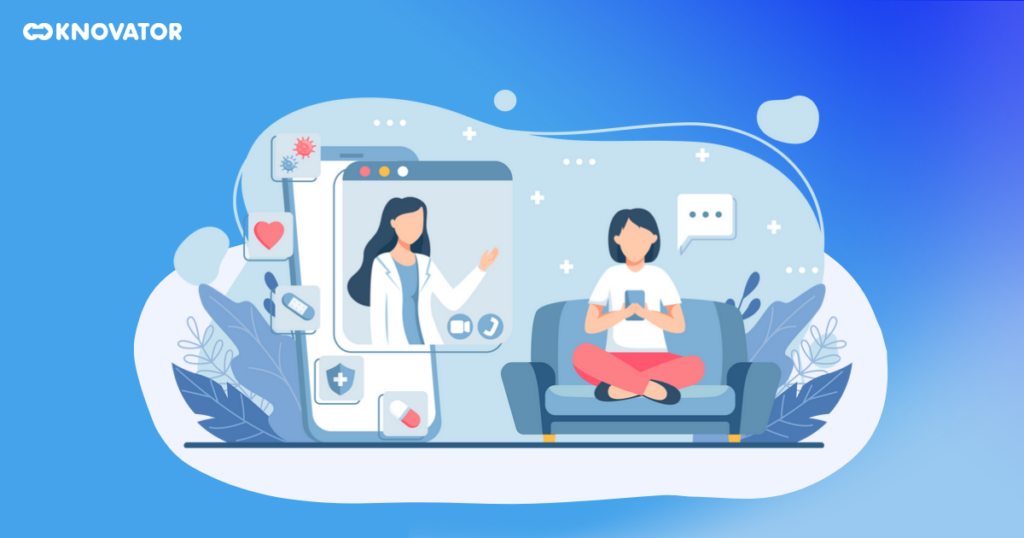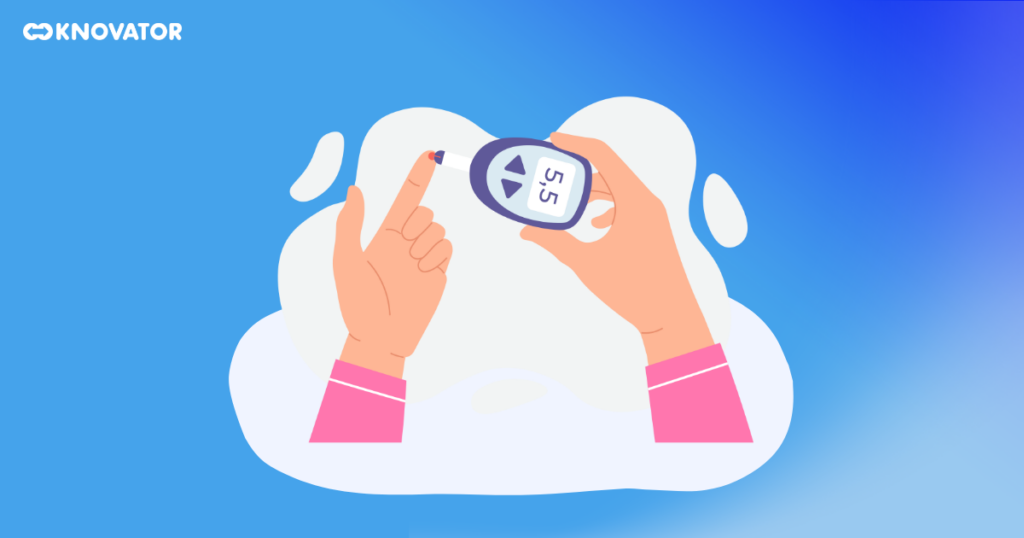In the ever-evolving world of healthcare technology, Remote Patient Monitoring Systems (RPMs) stand out as a significant advancement. These innovative devices are increasingly gaining popularity for their ability to efficiently monitor health conditions remotely. RPMs represent a step forward in healthcare, enabling individuals to manage their health effectively without the frequent need to visit a doctor’s office.
This blog post aims to delve into the details of RPM systems. It will cover what these systems are, their importance in the current healthcare landscape, how they have improved over time, and the positive impact they are making in healthcare. By the end of this post, you will have a comprehensive understanding of RPM systems and how they can be utilized for better health management.
What are Remote Patient Monitoring Systems?
 Remote Patient Monitoring is a game-changing approach in healthcare that uses advanced Remote Patient Monitoring (RPM), which is like using fancy gadgets and apps to check on patients’ health from far away. It’s super important, especially because of COVID-19, as it helps doctors and patients stay connected.
Remote Patient Monitoring is a game-changing approach in healthcare that uses advanced Remote Patient Monitoring (RPM), which is like using fancy gadgets and apps to check on patients’ health from far away. It’s super important, especially because of COVID-19, as it helps doctors and patients stay connected.
RPM uses cool tools like wearable sensors and phone apps to keep an eye on things like heart rate, blood pressure, and sugar levels. These gadgets send all this info to doctors right away so they can act fast and make personalized health plans. This means fewer trips to the hospital and better health for patients.
Why is RPM getting so popular? Well, more and more people are getting older and dealing with long-term illnesses. So, we need better ways to take care of them. Also, thanks to smart technology like the Internet of Things (IoT) and smart computers, RPM has become more affordable and available. Plus, because of the pandemic, it’s become a safe way to watch over patients without them having to go to the doctor’s office too often.
RPM is a game-changer in healthcare. It helps people in far-off places or areas with not many medical services. It also lets patients take charge of their health. And, by keeping people out of hospitals, it can even save money on healthcare.
To put it simply, RPM isn’t just a new tech concept; it’s a big deal in how we do healthcare now. It’s changing things for the better, helping patients around the world live healthier.
Critical Components of RPM Systems
 Remote patient monitoring systems are like super cool gadgets that can totally change how doctors take care of you. To get how awesome they are, you have to know what makes them tick. There are gadgets to keep an eye on you, apps on your phone, places to store all the info online, and special websites for hospitals. All these things team up to make sure patients get the best care, make it easier for them to talk to doctors, and make hospitals run smoother. As RPM gets even better, these things will be super important in deciding how doctors treat patients in the future.
Remote patient monitoring systems are like super cool gadgets that can totally change how doctors take care of you. To get how awesome they are, you have to know what makes them tick. There are gadgets to keep an eye on you, apps on your phone, places to store all the info online, and special websites for hospitals. All these things team up to make sure patients get the best care, make it easier for them to talk to doctors, and make hospitals run smoother. As RPM gets even better, these things will be super important in deciding how doctors treat patients in the future.
Patient Monitoring Device
At the core of RPM systems are diverse patient monitoring devices. These devices capture vital health data and provide real-time insights into a patient’s condition. To understand these devices, we’ll explore their FDA authorization status, the types of health data they can capture, and their role in revolutionizing healthcare.
1. FDA Authorization Status
Different kinds of devices help keep track of patients. There are wearable sensors, blood pressure cuffs, glucometers, and others. It’s super important that the FDA approves these devices. This approval means they meet really strict rules set by the government. So, patients and doctors can be sure these devices are accurate and safe to use.
2. Types of Health Data
RPM devices can do lots of things! They can check your heart rate, blood pressure, oxygen levels, sugar levels, and even your heart’s electrical activity (ECG). All this info helps doctors keep an eye on ongoing health issues, spot problems, and decide how to take care of patients better.
3. Impact on Healthcare
Devices that keep an eye on patients have changed healthcare a lot. They help doctors watch patients all the time without sticking things into them. This helps find health problems early, so people don’t have to go to the hospital as much. It also makes patients do more for their health, making them feel more in charge and responsible for staying healthy.
Patient-side Mobile Applications
 Keeping patients interested and involved is super important for remote health monitoring to work well. Apps on patients’ phones play a big role in making this happen. These apps are easy to use, follow healthcare rules, connect using Bluetooth, and make sure patients stay engaged and interested.
Keeping patients interested and involved is super important for remote health monitoring to work well. Apps on patients’ phones play a big role in making this happen. These apps are easy to use, follow healthcare rules, connect using Bluetooth, and make sure patients stay engaged and interested.
1. Features of Patient-side Apps
Mobile apps for patients are designed with users in mind. They’re easy to use and show health information in simple pictures. They also remind you to take your medicine and let you talk to your doctor online. These apps help you take care of yourself and keep talking to your doctor.
2. Healthcare Standards Compliance
The security and privacy of patient data are guaranteed by adherence to healthcare standards like the Health Insurance Portability and Accountability Act (HIPAA). Patient-side apps must comply with these regulations to maintain patient trust and data integrity.
3. Bluetooth Low Energy (BLE) Support
BLE technology enables seamless connectivity between patient monitoring devices and mobile apps. This real-time data transfer ensures that healthcare providers receive up-to-date information, allowing them to make timely interventions when necessary.
4. Impact on Patient Engagement
Patient-side apps enhance patient engagement by providing a convenient platform for monitoring and managing their health. This fosters a sense of empowerment and accountability among patients, resulting in better adherence to treatment plans and improved health outcomes.
Cloud Repository
 Data storage is the foundation of RPM, and the cloud repository serves as the secure space for all patient data. This section explores the importance of cloud-based storage, its direct-to-cloud connectivity, and the significance of data security in RPM systems. Importance of Cloud-based Storage: Cloud repositories offer scalability and accessibility, allowing healthcare providers to store vast amounts of patient data securely. The cloud’s elasticity ensures the system can accommodate growing datasets, making it ideal for long-term patient monitoring.
Data storage is the foundation of RPM, and the cloud repository serves as the secure space for all patient data. This section explores the importance of cloud-based storage, its direct-to-cloud connectivity, and the significance of data security in RPM systems. Importance of Cloud-based Storage: Cloud repositories offer scalability and accessibility, allowing healthcare providers to store vast amounts of patient data securely. The cloud’s elasticity ensures the system can accommodate growing datasets, making it ideal for long-term patient monitoring.
1. Direct-to-Cloud Connectivity
RPM systems leverage direct-to-cloud connectivity to transmit patient data in real time. This
seamless data flow ensures that healthcare providers have immediate access to critical information, enabling timely interventions and reducing the risk of adverse events.
2. Data Security
Protecting patient data is essential in healthcare. Cloud repositories employ robust security measures, including encryption, access controls, and regular audits, to safeguard patient information from unauthorized access and breaches. This makes patients and healthcare providers confident.
Hospital-side Web Application
 On the healthcare provider’s side, web applications are vital for practical RPM. These applications are designed to meet compliance requirements, offer integration capabilities, provide decision support features, and enable reporting mechanisms, notifications, and analytics to enhance patient care and streamline healthcare workflows.
On the healthcare provider’s side, web applications are vital for practical RPM. These applications are designed to meet compliance requirements, offer integration capabilities, provide decision support features, and enable reporting mechanisms, notifications, and analytics to enhance patient care and streamline healthcare workflows.
1. Compliance Requirements:
Regulations like the HITECH Act, also known as the Health Information Technology for Economic and Clinical Health Act (HIPAA), can be followed by hospital-side web apps. Compliance guarantees patient data security and reduces legal risks.
2. Integration Capabilities:
RPM applications require seamless connection with electronic health record (EHR) systems and other healthcare infrastructure. This integration allows healthcare providers to access comprehensive patient profiles, facilitating more informed decision-making.
3. Decision Support Features:
RPM web applications often incorporate decision support tools that offer clinical insights based on the collected patient data. These tools assist healthcare professionals in making well-informed decisions about patient care plans and interventions.
4. Reporting Mechanisms:
Robust reporting capabilities enable healthcare providers to generate comprehensive patient reports, monitor trends, and track patient progress. This data-driven approach enhances the quality of care and supports evidence-based medicine.
5. Notifications and Analytics:
RPM applications utilize notifications to alert healthcare providers to critical events or deviations from expected health parameters. Additionally, analytics tools process large datasets, providing valuable insights into population health trends and individual patient outcomes.
Remote Patient Monitoring Use Cases
 This innovative approach to healthcare delivery has numerous applications across various healthcare scenarios, improving patient care and outcomes. This section will explore three prominent use cases where RPM has made a significant difference in patient care.
This innovative approach to healthcare delivery has numerous applications across various healthcare scenarios, improving patient care and outcomes. This section will explore three prominent use cases where RPM has made a significant difference in patient care.
1. Chronic Disease Management
Keeping track of long-term illnesses like diabetes, high blood pressure, and heart problems is one of the super helpful things RPM does. It’s important to watch these conditions closely and get help quickly to make life better for people dealing with them. RPM systems let patients share important info with their doctors right away, like heart rate, BP, and sugar levels.
Imagine someone with diabetes using an RPM gadget to check their sugar levels regularly. The gadget sends this info to their healthcare team, who can look at it from far away. If the sugar levels start acting weird, the doctor can change the treatment plan, suggest diet changes, or set up a video chat to talk about it.
This way of handling long-term illnesses helps stop problems, reduces hospital visits, and makes people feel better overall.
Plus, RPM helps patients take control of their health issues by giving them instant feedback and tips. It keeps patients involved and helps them stick to their treatment plans, which means they get healthier in the end.
2. Post-Operative Care and Monitoring
After surgery, patients need to be watched closely to make sure they get better, and any problems are spotted early. Remote Patient Monitoring (RPM) systems help a lot with this. They let doctors keep an eye on patients without needing them to come to the hospital all the time.
Here’s how it works: Imagine someone has heart surgery. They can wear a special device that keeps track of their heart rate, oxygen levels, and how much they move around. This information goes to the doctors, who can quickly see if something is wrong. If they find any issues, they can help right away. This helps stop patients from having to go back to the hospital and makes sure they feel better faster.
RPM also makes things easier for patients. They can get better at home, which is way more comfortable than staying in the hospital. It’s like having a doctor with them at home, so they don’t have to worry too much. Plus, it reduces the chances of getting sick from the hospital.
3. Elderly Care and Aging in Place
Older people often need a lot of care, and it can be tough for hospitals and doctors to keep up. But there are special devices that can help seniors stay at home while still getting the care they need. These devices can keep an eye on things like how they move, if they fall if they take their medicine, and their vital signs.
For example, if a senior falls a lot, they can wear a special gadget with sensors that can tell if they fall or if their walking changes. If something unusual happens, it can send a message to the people taking care of them. These gadgets also help doctors and nurses keep in touch with seniors. They can change medicines or care plans quickly, so seniors don’t have to go to the hospital as much. This way, older folks can have a better life at home.
4. Mayo Clinic
The Mayo Clinic, a really famous hospital, has been helping people with long-lasting health problems since 2016. They also started helping folks with COVID-19 in 2019, especially those who just left the hospital.
When COVID-19 patients leave the hospital, the clinic gives them special gadgets to keep track of their health. These gadgets include a device to check oxygen levels, a fancy thermometer, a scale to monitor weight loss, a machine to measure blood pressure, and a small computer to record their health info twice a day.
A special team at the clinic keeps an eye on the info these patients send in. They look out for any big changes, especially in oxygen levels. If something seems wrong, they quickly get help for the patient to avoid breathing problems.
The clinic experts say that finding problems early can make them less serious. It means people don’t have to go back to the hospital or stay there for a long time. They watch each patient for about 20 days on average.
Choosing the Best RPM Vendor
 Choosing the right Remote Patient Monitoring (RPM) vendor is critical in implementing an effective healthcare solution. Several vital considerations should guide this decision-making process.
Choosing the right Remote Patient Monitoring (RPM) vendor is critical in implementing an effective healthcare solution. Several vital considerations should guide this decision-making process.
1. Track record and reputation of the vendor
Examine the vendor’s record of offering trustworthy RPM solutions and client comments first. A recognized vendor who has received good feedback displays their commitment to excellence and client happiness.
2. Flexibility and Scalability: Meeting Your Needs
To ensure the RPM solution satisfies your present needs and has the flexibility to expand with your firm, evaluate its scalability. This adaptability is crucial in the ever-evolving healthcare environment.
3. Seamless Connectivity with Existing Systems: Integration Capabilities
Check whether the vendor’s RPM system can effectively interact with your Electronic Health Records (EHR) or other medical procedures. Integration that goes smoothly minimizes disruptions and improves overall operational effectiveness.
4. User-Friendly Design: Patients and Healthcare Professionals Enjoy an Intuitive Experience
Think about how user-friendly the RPM solution is. Both healthcare professionals and patients should be able to use it without any training, ensuring a smooth transition to RPM monitoring.
5. Regulation Compliance: Protecting Data Security and Privacy
The vendor’s compliance with healthcare laws, such as HIPAA in the US, is non-negotiable. This commitment ensures the preservation of patient data and reduces the possibility of regulatory penalties.
6. Support and Upkeep: Prompt Support and System Updates
Consider the support and maintenance options provided by the seller. A responsive customer support team and regular system updates are essential for your RPM solution to succeed.
7. Advantages of Ready-to-Use Solutions and Customization Considerations
Due to their pre-configured nature and more straightforward implementation, ready-to-use RPM solutions occasionally offer definite advantages. However, ensure the chosen provider can adapt the approach to fit your unique needs and specifications.
Types of RPM Systems
 Remote Patient Monitoring (RPM) systems have revolutionized healthcare by continuously monitoring and managing patients’ health outside of traditional healthcare settings. Here, we’ll explore three specific types of RPM systems that cater to diverse healthcare needs: Senior Home Monitoring Systems, Cardiac Monitoring Systems, and Chronic and Post-Acute Care Management Systems.
Remote Patient Monitoring (RPM) systems have revolutionized healthcare by continuously monitoring and managing patients’ health outside of traditional healthcare settings. Here, we’ll explore three specific types of RPM systems that cater to diverse healthcare needs: Senior Home Monitoring Systems, Cardiac Monitoring Systems, and Chronic and Post-Acute Care Management Systems.
Senior Home Monitoring Systems
Senior Home Monitoring Systems are special gadgets for the elderly who want to stay on their own but still be safe and healthy. These gadgets, like smartwatches and sensors, keep an eye on important things like heart rate and activity levels. Doctors and family members can check this info on their computers to see how the seniors are doing.
These gadgets can also tell if a senior has fallen or needs to take their medicine. And if something bad happens, like an emergency, they can tell the doctors or family right away. These gadgets help older people stay at home and make their families feel less worried.
Cardiac Monitoring Systems
Cardiac Monitoring Systems are like special gadgets that keep an eye on people with heart problems, like those who had heart surgery or have weak hearts. These gadgets can be machines at the hospital or wearable devices you can wear, like a watch. They check your heart rate and other important things all the time.
These gadgets are super important because they can find problems with your heart early. This helps to stop you from going back to the hospital and makes sure you take the right medicines. Doctors can get messages on their computers and see the info from far away. This helps them to change your treatment if needed and make sure you’re okay.
Chronic and Post-Acute Care Management Systems
Chronic and Post-Acute Care Management Systems are helpful tools for people who have long-term illnesses or are getting better after surgeries or serious illnesses. These tools include things like wearable gadgets, phone apps, and safe websites where patients can share information.
With these systems, patients can keep an eye on how they’re feeling, if they’re taking their medicines correctly, and what they do every day. Doctors and nurses can also keep track of patients’ progress from far away. If there’s a problem, they can step in and offer advice. This way, patients can take better care of themselves, and it reduces the chance of going back to the hospital. It’s all about making sure patients get the best care possible!
Implementation of RPM Systems
 The successful implementation of Remote Patient Monitoring (RPM) systems in a healthcare setting involves well-thought-out steps, guidelines, staff education, investments, and workflow redesign considerations. Here’s an overview:
The successful implementation of Remote Patient Monitoring (RPM) systems in a healthcare setting involves well-thought-out steps, guidelines, staff education, investments, and workflow redesign considerations. Here’s an overview:
1. Needs Evaluation
Conduct a detailed evaluation to determine the precise patient group and clinical circumstances that might benefit from RPM the most. The aims and objectives of the RPM program are defined with the use of this study.
2. Vendor Selection
Carefully choose a reliable RPM vendor that aligns with your organization’s needs, complies with healthcare regulations (e.g., HIPAA), and offers the necessary support and customization options. Vendor selection should consider integration capabilities, data security, and scalability.
3. Workflow Redesign
Redesign existing workflows to incorporate RPM seamlessly. Define roles and responsibilities for healthcare professionals, including nurses, physicians, and support staff. Determine how RPM data will be integrated into Electronic Health Records (EHR) and clinical decision support systems.
4. Training and Education
Provide comprehensive training to healthcare staff on using RPM devices, interpreting patient data, and responding to alerts. Ensure everyone involved understands the new workflows and their roles in delivering care through RPM.
5. Patient Engagement
Educate patients on the benefits of RPM and provide training on device usage and data reporting. Ensure patients are comfortable with the technology and understand their role in the RPM process. Establish clear communication channels for patients to reach out with questions or concerns.
6. Device Deployment
Deploy RPM devices to patients’ homes and ensure they are set up correctly. Regularly monitor device functionality and provide technical support to patients as needed.
7. Data Management and Integration
Develop a secure infrastructure for collecting, storing, and transmitting patient data. Ensure seamless integration with EHR systems to allow healthcare providers easy access to patient information. Implement data analytics tools to identify trends and insights for proactive care.
8. Quality Assurance
Establish quality control procedures to guarantee the reliability and correctness of RPM data. Review and audit patient data often to identify and correct any errors.
9. Compliance and Security
Maintain strict compliance with healthcare regulations, especially regarding patient privacy and data security. Put robust cybersecurity procedures in place to prevent unwanted access or data breaches.
10. Continuous Improvement
Continuously monitor and evaluate the RPM program’s effectiveness and patient outcomes. Use data-driven insights to make adjustments and improvements over time.
11. Financial Investment
Allocate resources for the initial setup, ongoing maintenance, and support of the RPM program. Consider potential cost savings due to reduced hospital readmissions and improved patient outcomes.
Make Use of Remote Patient Monitoring & Transform Healthcare
Use RPM to help doctors know which company to pick for remote patient monitoring, help patients with personalized health plans, and let them see their health updates in real-time. RPM works for older adults, people recovering from surgery, and those with long-term illnesses. It helps them stay independent and healthy, saves money, and makes sure even people in rural areas can get medical help. To make the world healthier, start using RPM techniques now for better and caring healthcare.











